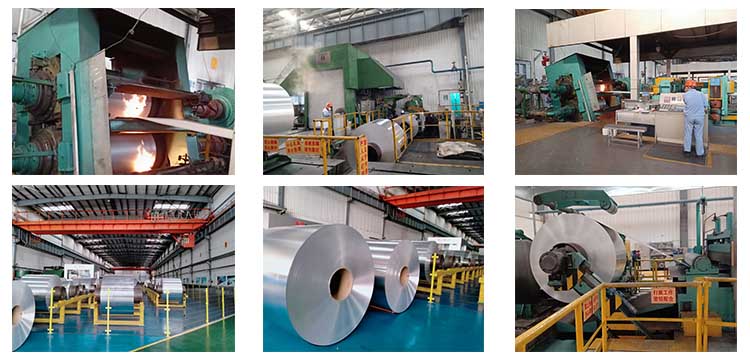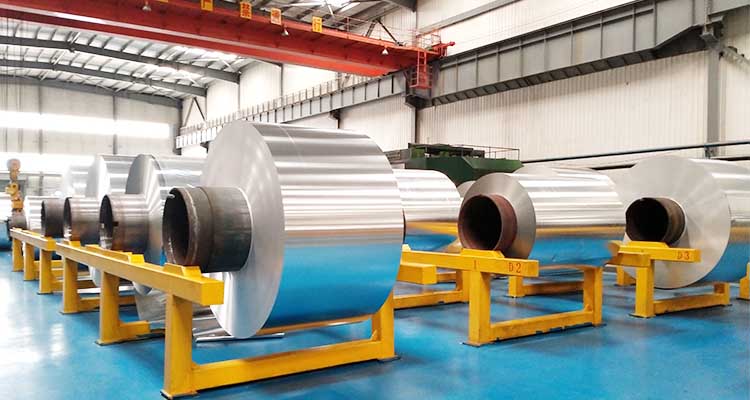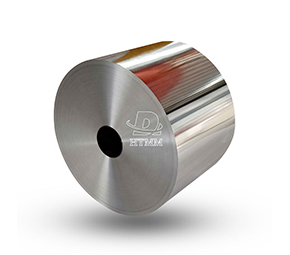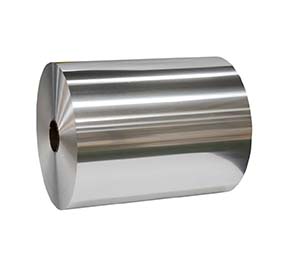As evidence that selecting raw materials requires consideration, a competitor once took shortcuts by using subpar resources to produce foil that cracked easily, costing them a sizable order and damaging their brand.
Roll of Aluminum Foil Raw materials, which are mainly categorized by purity (99.0% industrial-grade to 99.99% high-purity), are not one-size-fits-all but rather customized for specific application cases. To ensure safety, food packaging foil must be made of food-grade aluminum that complies with GB 4806.10 and has stringent lead and cadmium limitations. Strength and resistance to corrosion are given first priority in industrial packaging foil, which uses aluminum-magnesium or aluminum-manganese alloys. Even greater requirements must be met by lithium battery packing foil: consistent grain structure and ultra-thin thickness. The first step to quality is matching raw materials to requirements.

Selecting the appropriate raw materials for aluminum foil rolls greatly increases production efficiency. Superior materials contain less than 0.1% iron or silicon impurities, which minimizes metallic inclusions that result in "dark streaks" or cracks during rolling. This is demonstrated by the two lines at our factory: While mid-range materials push variation to ±2 microns, scrap to 8%, and lower efficiency by 30%, high-quality materials maintain thickness deviation within ±0.5 microns and scrap rates <1%. Bigger issues arise from inferior materials; for example, oxidation marks on food wrappers produced by excess copper in raw materials required a complete refund and reputational restoration.
The "first line of defense" for raw materials used to make aluminum foil rolls is testing. Our lab employs a three-step procedure: visual examination for oxidation or scratches; physical-chemical tests (hardness testers to assure formability, spectrometers for composition, and tensile machines for elongation—at least 25% for food foil); and simulated rolling to verify equipment compatibility. Reliable, tear-resistant foil is ensured by just accepting passing materials.
Aluminum Foil Roll Raw Materials puts safety above performance when it comes to foil for the food industry. They must pass 20+ tests and be certified by the National Food Safety Risk Assessment Center (e.g., <0.01mg/L heavy metals after 24 hours in 4% acetic acid). FDA/EU 10/2011 requirements must be met by exported goods. This emphasis was previously demonstrated by a baking client who demanded complete reports and a supplier visit before to partnering.

Customized aluminum foil roll raw materials are needed by industrial industries. To keep moisture out, electronic packaging foil must have a pinhole-free density (≤3 pinholes/m2, <0.03mm diameter). For a 500-hour salt-spray corrosion resistance and heat resistance of 150°C+, building insulation foil is passivated. For conductivity, automotive radiator foil employs 99.7%+ pure aluminum.
| Temper: | O H22 H24 |
| Use: | Household Use, making food container,Flexible packaging,heat sealing, industrial use |
| Treatment: | PLAIN |
| Type: | Roll |
| Alloy: | Alloy 8011/1235/8006/3003/8079 |
| Thickness: | 0.006-0.2mm |
| Place of Origin: | China (Mainland) |
| Model Number: | Aluminum Foil Raw Materials |
| Name: | Aluminium foil Raw Materails for household / flexible packaging/ making food container |
| Material: | Aluminum foil raw materials |
| Color: | Silvery |
| Width: | 200-1850 MM |
| ID: | 76mm/152mm |
| Application: | Food Wrapping |
| Certificate: | ISO9001,ISO14001,RHSAS18001,SGS |
| Packing: | Wooden Cases |
| Usage: | Household Use, making food container,Flexible packaging,heat sealing, industrial use |
| MOQ: | 6 Ton |
Strict supplier screening, including five or more years of experience, ISO 9001/environmental certifications, and a three-month trial, is how we find raw materials for aluminum foil rolls. We examine the facilities of our core suppliers and have them sign quality agreements. Last year, we resolved a supplier's temperature control problems to stop hardness fluctuations. Underperformers are eliminated via a monthly ranking system, guaranteeing a steady supply.
The raw materials for aluminum foil rolls are moving toward "high performance" and "eco-friendliness." The usage of bauxite is decreased when 30% of our household foil is made from recycled aluminum, with a 50% aim. Aerospace uses new alloys (such as aluminum with scandium added for foil that is 40% stronger and 15% lighter); medical packaging uses antibacterial compounds. For more consistent billets, continuous casting takes the role of conventional techniques.
Aluminum Foil Roll Raw Materials are highly sensitive to environmental conditions, so they must be transported and stored with extreme care to avoid compromising their quality.
In our warehouse, we take strict measures to maintain optimal storage conditions: each batch of raw materials is fully wrapped in thick moisture-proof film to prevent oxidation caused by moisture absorption, and the warehouse is equipped with a constant temperature and humidity system that keeps the temperature stable at 20–25°C and humidity at 50–60%—this controlled environment ensures the raw materials don’t become too brittle or soft, which would affect their performance during rolling.
When it comes to transportation, we strictly require logistics partners to use fully enclosed trucks to shield the raw materials from rain, dust, and direct sunlight. All loading and unloading operations are done with cautious handling using forklifts with soft pads to prevent scratches or deformation of the aluminum billets.
For instance, once a batch of raw materials was accidentally exposed to rain during transit, resulting in minor surface oxidation spots. We immediately contacted the supplier to replace the damaged materials without delay, ensuring that no substandard Aluminum Foil Roll Raw Materials entered our production line and thus avoiding potential quality issues in the final aluminum foil products.
Aluminum Foil Roll Raw Materials are a common challenge for new businesses; steer clear of pursuing low prices and specify your needs (industrial foil: strength/corrosion resistance; food foil: safety/ductility).
Good suppliers provide customized guidance; for example, we once fixed breakage in a client's old mill by adjusting the raw material hardness.
Contact us for information on testing and procurement, or if you need assistance choosing raw materials for aluminum foil rolls. We offer technical assistance, certified products, and on-site direction. Great foil is built on raw ingredients, so let's work together to achieve success.





